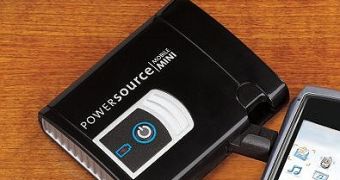Of course, there are countless portable power sources around, and more designs are yet to come, with the technological advance providing the industry with better batteries, innovative power storage solutions and creative designs. Yet, the Mobile Mini PowerSource has drawn my attention because it boasted a very nifty set of characteristics you simply don't get in any other similar gadget.
One of the coolest things about the Mobile Mini PowerSource is that, in most cases, you don't need to work with cables and that's a very strong point for me.
Portability and ease of use are some of the key elements when dealing with such gadgetry. Small dimensions and a consistent, reliable power storing capacity are things that really matter when one is on the go, and access to power outlets is limited or not an option altogether.
The Mobile Mini PowerSource comes with a pivoting, retracting USB connector, which makes the overall design truly clean and good-looking. Now, there are certain situations when such an engineering-like approach to connectivity might not serve you in the best possible way, especially if you're planning to use your phone while recharging it. Nevertheless, on most occasions, the Mobile Mini PowerSource will pose no troubles.
The pivoting arm is doubled by a traditional USB port, which enables simultaneous charging for more than one single device. The Mobile Mini PowerSource can be used with most portable electronics, such as Sony PSP, Game Boy Micro, Motorola or Blackberry phones, and so on. If you're using this power source with only one device, it will provide you with some serious power backup: the Mobile Mini PowerSource can refill the battery of your Blackberry phone three times on a single charge, while your iPod nano will be charged up to seven times before you need to connect your mobile power source to a line again.
Mobile Mini PowerSource comes with serious protection against severe temperature variations, power surges and high-input voltages, and comes with AC and DC (in-car) adapters. It needs three hours to fully charge on AC/DC, and almost six hours to reach maximal levels when powered via USB from a computer. Given all the above and the 5 oz. (141 grams) weight mark, the under $60 price tag looks quite fair, especially for those always on the run.
We are just a few, but there are many of you, Softpedia users, out there. That's why we thought it would be a good idea to create an email address for you to help us a little in finding gadgets we missed. Interesting links are bound to be posted with recognition going mainly to those who submit. The address is  .
.

 14 DAY TRIAL //
14 DAY TRIAL //